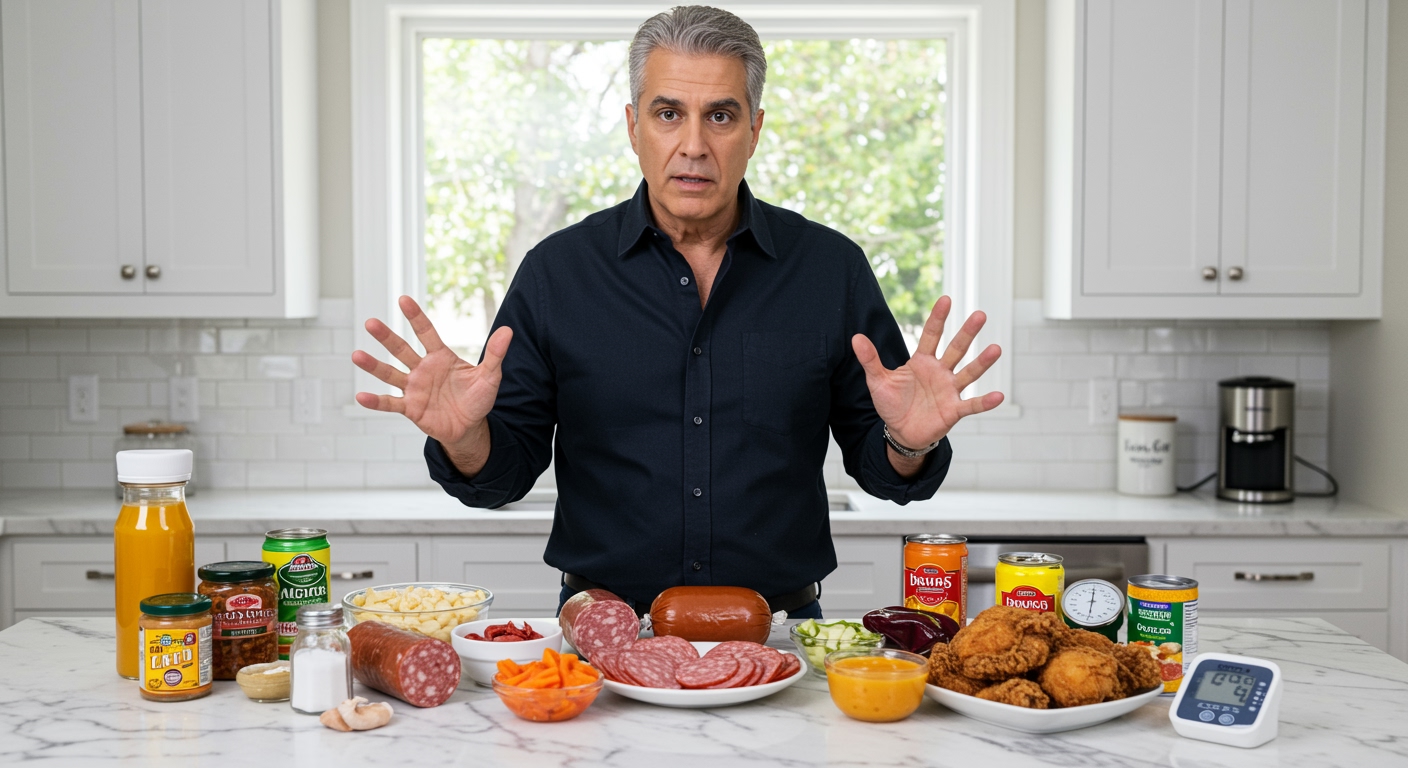✪ Key Takeaway: Hypertensive patients can enjoy buffets by choosing fresh foods and avoiding processed, high-sodium options.
Introduction
Your doctor just told you that your blood pressure is too high and you need to watch your diet.
Now you are wondering if those weekend buffet dinners with family are completely off the table.
Hi, I am Abdur, your nutrition coach and today I am going to explain exactly which buffet foods you should avoid and which ones are perfectly safe for managing your blood pressure.
What Makes Buffet Food Dangerous For High Blood Pressure?
The biggest problem with buffet food is not the buffet itself but the processed ingredients that restaurants use to keep food fresh for hours.
Most buffet items contain excessive sodium because salt acts as a natural preservative and flavor enhancer.
Research shows that consuming more than 2,300 milligrams of sodium per day can raise blood pressure significantly in sensitive individuals.
A single serving of buffet fried chicken can contain up to 1,200 milligrams of sodium, which is already half your daily limit.
The hidden danger lies in dishes that do not taste salty but are loaded with sodium compounds like monosodium glutamate and sodium phosphates.
These additives help maintain texture and color in buffet foods but can cause your blood vessels to constrict and increase fluid retention.
✪ Fact: Buffet soups often contain 800-1,500 mg of sodium per cup, more than most canned soups.
Which Specific Buffet Foods Should You Completely Avoid?
The worst offenders at any buffet are processed meats like bacon, sausages, ham, and deli cuts.
These foods undergo curing processes that require massive amounts of sodium to prevent bacterial growth and extend shelf life.
Pickled vegetables, olives, and fermented foods are also sodium bombs that can spike your blood pressure within hours of consumption.
Fried foods at buffets are particularly dangerous because they combine high sodium with trans fats that damage your arterial walls.
Creamy salads like potato salad, coleslaw, and pasta salad contain mayonnaise-based dressings loaded with sodium and preservatives.
Cheese-based dishes and processed sauces can contain up to 400 milligrams of sodium per tablespoon, making portion control nearly impossible.
Even seemingly healthy options like vegetable stir-fries often contain soy sauce and other high-sodium seasonings that can derail your blood pressure management.
✪ Pro Tip: Always ask buffet staff about ingredients if you are unsure about sodium content in any dish.
What Are The Best Buffet Choices For Managing Blood Pressure?
Fresh fruits and vegetables are your safest options at any buffet because they naturally contain potassium, which helps counteract sodium effects.
Grilled or baked lean proteins like chicken breast, fish, or turkey without heavy sauces provide essential nutrients without excessive sodium.
Plain rice, quinoa, and other whole grains offer filling carbohydrates without the sodium load of processed sides.
Raw salads with olive oil and vinegar dressing give you fiber and healthy fats that support cardiovascular health.
Steamed vegetables without butter or heavy seasonings retain their natural minerals while keeping sodium levels minimal.
Fresh herbs like parsley, cilantro, and basil can add flavor to your plate without contributing any sodium to your meal.
Nuts and seeds in their natural state provide healthy fats and protein, but avoid salted or flavored varieties that defeat the purpose.
✪ Note: Drinking plenty of water during your buffet meal helps your kidneys process excess sodium more effectively.
How Can You Navigate Buffets Safely With High Blood Pressure?
Start by walking through the entire buffet before putting anything on your plate to identify safe options and plan your meal strategy.
Fill half your plate with fresh vegetables and fruits first, then add lean proteins and whole grains to create a balanced, blood pressure-friendly meal.
Use smaller plates if available because this naturally limits your portion sizes and reduces the temptation to overeat high-sodium foods.
Taste foods before adding any salt, pepper, or condiments because many buffet items are already heavily seasoned.
Skip the bread basket and focus on foods that provide nutritional value rather than empty calories and hidden sodium.
Eat slowly and check in with your hunger levels to avoid the common buffet trap of eating until you feel uncomfortably full.
Consider eating a small, healthy snack before arriving at the buffet to prevent making impulsive food choices when you are extremely hungry.
✪ Pro Tip: Bring your own low-sodium seasonings like lemon juice or herbs to enhance flavor without adding salt.
The Bottom Line
You do not need to avoid buffets completely if you have high blood pressure, but you must be strategic about your food choices.
Smart eating is about making informed choices, not eliminating all social dining experiences, and buffets can fit into a heart-healthy lifestyle when approached correctly.
I would love to hear about your own buffet experiences and any questions you might have about managing blood pressure through diet, so please share your thoughts in the comments below.
References
At NutritionCrown, we use quality and credible sources to ensure our content is accurate and trustworthy. Below are the sources referenced in creating this article:
- Mayo Clinic: DASH diet: Healthy eating to lower your blood pressure
- American Medical Association: 3 foods your patients with high BP should avoid
- UC Davis Health: Your guide to low-sodium eating and how to lower blood pressure
- National Heart, Lung, and Blood Institute: Your Guide to Lowering Your Blood Pressure with DASH





